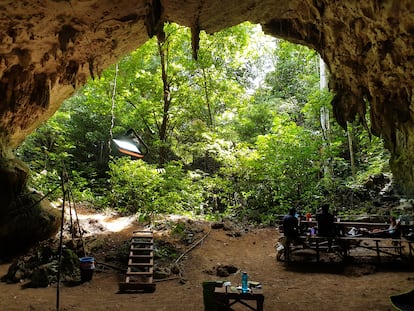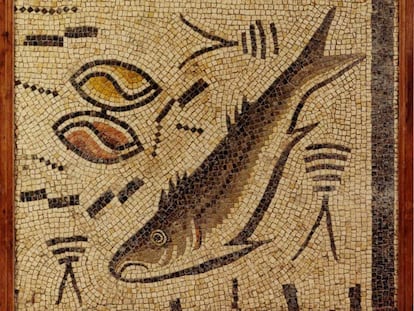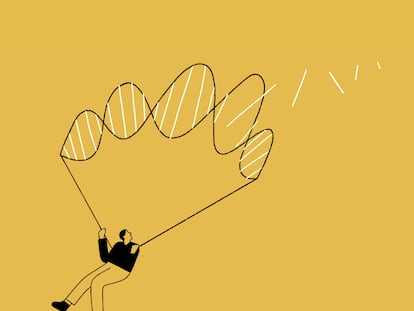A foot that was amputated 31,000 years ago illuminates the origins of surgery
A child’s skeleton, found in the Indonesian jungle, suggests that hunter-gatherers had empathy and medical knowledge
According to remains found in the remote Liang Tebo cave on the Indonesian island of Borneo, a boy – who died 31,000 years ago – survived for about eight years after a surgery that amputated his left foot.
The bones of the severed leg indicate that it was an intentional, surgical cut, performed with enough knowledge to stop the patient from bleeding to death. The operation was successful and the post-operative care was carried out with the necessary mastery to keep the child alive for nearly a decade.
According to archaeologist Tim Maloney and his team, from Griffith University in Australia, the oldest known surgical intervention was carried out in France about 7,000 years ago. This all changed last week, when the discovery in Borneo was published in Nature, the prestigious science journal.

For paleoanthropologist María Martinón Torres, Director of the National Center for Research on Human Evolution (Cenieh), the remains are probably “the oldest evidence of [a] doctor.” The scientist – who did not participate in the excavation or study – believes that it is yet another piece of evidence that Homo sapiens “provided help and care to those who had disabilities.”
The site where scientists discovered the burial is inside a mountainous area of tropical forest known as the Sangkulirang–Mangkalihat, which is only accessible by boat at certain times of the year. It is a limestone rock formation that, following water erosion, gave rise to enormous caverns. The first thing the researchers found were cave paintings, which are not uncommon in a part of Southeast Asia known for having the first figurative art, drawn more than 40,000 years ago.
The team of archaeologists excavated in the lower part of the cave to a depth of five feet,
where they found the fossil remains of the child’s complete right leg, plus the amputated left tibia and fibula. In the severed limb, you can see “in the collagen that surrounds the bones what are characteristic signs that indicate that [it has] already healed,” says paleoanthropologist Laura Martín-Francés, another researcher affiliated with Cenieh.
Martín-Francés describes the finding as important because “the act of [amputation] requires the ability to foresee that, if not done correctly, the subject will die.” The authors of the investigation have ruled out that the cut was the result of a violent accident or an animal bite. The doctor who performed the surgery must have had “prior knowledge” of the human body and perhaps even carried out previous tests with other animals to learn about anatomy, according to Martín-Francés.
In a companion article published in Nature, Professor Charlotte Ann Robert of Durham University in the United Kingdom underlines the complexity of an amputation: keeping the patient from bleeding to death may have required knowledge of medicinal plants from the area, possibly a “type of moss.”
For the researchers from Cenieh, the most outstanding element of the discovery – more than the medical prowess – is the “empathy” reflected in the act of amputation.
“The fact that Homo sapiens have developed the ability to selflessly care for others does not make us unique… but almost!” says Martín-Francés.
Dr. Martinón Torres, author of the book Homo imperfectus (Destiny, 2022), delves into this point: “In our species, the survival instinct encompasses the group, not just the individual, and includes premeditated, proactive and organized acts, such as the institutionalization of care.”
In addition, the expert points out, the fact that the child was “taken care of for years and buried also shows that, until the end, [he or she] was integrated into the life of that society.”
Tu suscripción se está usando en otro dispositivo
¿Quieres añadir otro usuario a tu suscripción?
Si continúas leyendo en este dispositivo, no se podrá leer en el otro.
FlechaTu suscripción se está usando en otro dispositivo y solo puedes acceder a EL PAÍS desde un dispositivo a la vez.
Si quieres compartir tu cuenta, cambia tu suscripción a la modalidad Premium, así podrás añadir otro usuario. Cada uno accederá con su propia cuenta de email, lo que os permitirá personalizar vuestra experiencia en EL PAÍS.
¿Tienes una suscripción de empresa? Accede aquí para contratar más cuentas.
En el caso de no saber quién está usando tu cuenta, te recomendamos cambiar tu contraseña aquí.
Si decides continuar compartiendo tu cuenta, este mensaje se mostrará en tu dispositivo y en el de la otra persona que está usando tu cuenta de forma indefinida, afectando a tu experiencia de lectura. Puedes consultar aquí los términos y condiciones de la suscripción digital.
More information
Últimas noticias
Most viewed
- Sinaloa Cartel war is taking its toll on Los Chapitos
- Oona Chaplin: ‘I told James Cameron that I was living in a treehouse and starting a permaculture project with a friend’
- Reinhard Genzel, Nobel laureate in physics: ‘One-minute videos will never give you the truth’
- Why the price of coffee has skyrocketed: from Brazilian plantations to specialty coffee houses
- Silver prices are going crazy: This is what’s fueling the rally











































